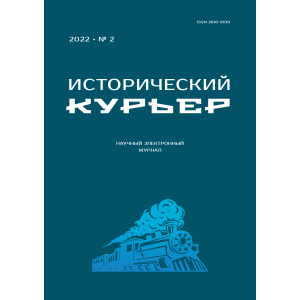Researchers representing various branches of humanitarian knowledge took part in the creation of the issue dedicated to the history of Russian Orthodoxy of the 16th – 20th centuries. Their core has traditionally been made up of historians and philologists, experts in various aspects of the history and culture of the Russian Orthodox Church and such a complex religious and social movement, which is commonly called Old Believers. The published research is supplemented by the works of librarians and musicologists who have enriched the problems of this issue of the journal. Being historians and philologists themselves, our authors are also specialists in such special areas of humanitarian knowledge as source studies, archeography, textual studies, codicology, that is, in a scientific field formed by special historical and philological disciplines. They reliably unite researchers, making them representatives of a single scientific community studying the problems of history and culture of Orthodox Christianity in Russia from the medieval period to the present time. Articles presented in this thematic issue are included in four sections: “Monuments of Writing in the History of the Russian Orthodox Church”, “Hierarchy and Management Institutions of the Russian Orthodox Church”, “History of Orthodox Pedagogy and Education”, “Book Culture and History of the Old Believers”.
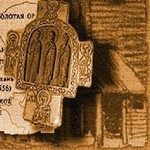 Monuments of Writing in the History of the Russian Orthodox Church
Monuments of Writing in the History of the Russian Orthodox Church
L.I. Zhurova
Consolatory Epistles in the Russian Ecclesiastical Publicism of the 16th Century
The article presents an analysis of a number of messages of Russian publicists of the 16th century, built on a two-syllable motif – sorrow-consolation. The purpose of the study is to identify the features of its functioning in the epistolographic practice of church writers of Moscow Russia. The specific features of the consoling messages of the scribes of the Volokolamsk school and the Athonite monk Maxim the Greek are established.
Publishing: 28/04/2022
How to cite: Zhurova L.I. Consolatory Epistles in the Russian Ecclesiastical Publicism of the 16th Century // Historical Courier, 2022, No. 2 (22), pp. 11–26. [Available online: http://istkurier.ru/data/2022/ISTKURIER-2022-2-01.pdf]
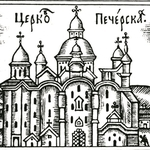 Monuments of Writing in the History of the Russian Orthodox Church
Monuments of Writing in the History of the Russian Orthodox Church
V.V. Podoprigora
The Concept of Russian Monarchy in the Chronicle of the White and Black Russia of the 17th Century and the Kiev Pechersk Monastery
The article is devoted to the narrative of the Russian history of the 12th–13th centuries in the “Kroynyk about White and Black Russia”, which is part of the world-wide historical corpus that developed in the first third of the 17th century in the Ukrainian lands of the Polish-Lithuanian Commonwealth. The methods of processing by the compiler of its main sources are considered: the South Russian chronicle of the end of the 12th century and the “Chronicles of Polish, Lithuanian, Zhmud and All Russia” by Maciej Stryjkovsky. It was found out that the selection of information from these sources is largely determined by the concept that unites Kiev and Galich as the centers of the “Russian monarchy”, the dynasty of the Volyn Monomakhovichi and the Kiev-Pechersk Monastery.
Publishing: 28/04/2022
How to cite: Podoprigora V.V. The Concept of Russian Monarchy in the Chronicle of the White and Black Russia of the 17th Century and the Kiev Pechersk Monastery // Historical Courier, 2022, No. 2 (22), pp. 27–41. [Available online: http://istkurier.ru/data/2022/ISTKURIER-2022-2-02.pdf]
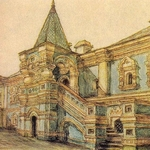 Monuments of Writing in the History of the Russian Orthodox Church
Monuments of Writing in the History of the Russian Orthodox Church
A.A. Yudin
Old Russian Azbukovniks and Vremennik by Ivan Timofeev: The Way to Creating an Author’s Style
The article is devoted to the source study analysis of some literary sources of Ivan Timofeev’s “Vremennik”. The work of the Russian author of the beginning of the 17th century is considered among other book monuments of the Time of Troubles, the characteristic features inherent in these texts are revealed. It is proved that the examples of the use of foreign vocabulary by Ivan Timofeev are not based on oral tradition, but on the book tradition, which was common in a circle of professional writers of that time, figures of the so-called “Prikaznaya shkola”. The unique allegorical style of the author, describing the main characters, follows the principle of Nome nest Omen, often used by figures of this school to show their literary skills.
Publishing: 28/04/2022
How to cite: Yudin A.A. Old Russian Azbukovniks and Vremennik by Ivan Timofeev: The Way to Creating an Author’s Style // Historical Courier, 2022, No. 2 (22), pp. 42–62. [Available online: http://istkurier.ru/data/2022/ISTKURIER-2022-2-03.pdf]
 Monuments of Writing in the History of the Russian Orthodox Church
Monuments of Writing in the History of the Russian Orthodox Church
T.V. Panich
The Sermon “About Those Who Create Discord” – an Essay in Defense of the Church from the Book of the End of the 17th Century “The Shield of Faith”
The article is devoted to the study and publication of the polemical essay “On those who create church discord”, which is part of the book of the late 17th century “Shield of Faith”. The work reflects the theme of the dispute between the Grecophiles and Latins about the time of transubstantiation of the holy gifts at the liturgy. The author of the writing denounces the opponents of Orthodox teaching on a controversial issue, defends the episcopal authority and the spiritual authority of the Church. The content and structure of the work, its function in the book “The Shield of Faith” are considered; an assumption is made regarding the attribution of the text to Euphemia the Monster. The research is accompanied by the publication based of an essay on the manuscript of the late 17th century.
Publishing: 28/04/2022
How to cite: Panich T.V. The Sermon “About Those Who Create Discord” – an Essay in Defense of the Church from the Book of the End of the 17th Century “The Shield of Faith” // Historical Courier, 2022, No. 2 (22), pp. 63–73. [Available online: http://istkurier.ru/data/2022/ISTKURIER-2022-2-04.pdf]
 Monuments of Writing in the History of the Russian Orthodox Church
Monuments of Writing in the History of the Russian Orthodox Church
S.G. Petrov
Pamphlet “Something about Valaam Madness” about the Transition of the Valaam Monastery of the Transfiguration of the Savior to a New Calendar Style
The pamphlet “Something about Valaam Madness” is considered and published – an original work created by an unknown author from the Valaam Transfiguration Monastery during the difficult period of its transition to a new calendar style in the 1920s. It is noted that in this work the monks who recognized the Gregorian calendar are condemned in a bright satirical form. It is determined that the appearance of the pamphlet is caused by the sharpness of confrontation between supporters and opponents of calendar reform. The date of its creation has been set and an attribution attempt has been made. The pamphlet is published in accordance with modern traditional requirements.
Publishing: 28/04/2022
How to cite: Petrov S.G. Pamphlet “Something about Valaam Madness” about the Transition of the Valaam Monastery of the Transfiguration of the Savior to a New Calendar Style // Historical Courier, 2022, No. 2 (22), pp. 74–91. [Available online: http://istkurier.ru/data/2022/ISTKURIER-2022-2-05.pdf]
 Hierarchy and Governance Institutions of the Russian Orthodox Church
Hierarchy and Governance Institutions of the Russian Orthodox Church
E.V. Belyakova
On the Changing Status of Priests in the Russian Church in the 16th Century
The article examines the peculiarities of the status of priests in the Russian Church in the 16th century on the basis of sources of church law and act material. The changes in the concepts of “parish” and “spiritual father” in the Stoglav, forms of charters of oridination, canonical collections are shown and the features of the emergence of new institutions for the control of priests are traced.
The article was prepared with the support of the Russian Science Foundation, project No. 20-18-00218 “Institutes of Governance of the Russian Church in the 16th century”.
Publishing: 28/04/2022
How to cite: Belyakova E.V. On the Changing Status of Priests in the Russian Church in the 16th Century // Historical Courier, 2022, No. 2 (22), pp. 92–112. [Available online: http://istkurier.ru/data/2022/ISTKURIER-2022-2-06.pdf]
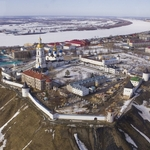 Hierarchy and Governance Institutions of the Russian Orthodox Church
Hierarchy and Governance Institutions of the Russian Orthodox Church
I.A. Nikulin
The Study of the Tobolsk Bishop’s House as a Church-Administrative Structure in Russian Historiography
The article examines the history and approaches to the study of the Tobolsk Episcopal house as a church-administrative structure in Russian historical science mainly at the turn of the 20th–21th centuries. The author comes to the conclusion that the issue, despite significant successes, is still waiting for its researcher.
Publishing: 28/04/2022
How to cite: Nikulin I.A. The Study of the Tobolsk Bishop’s House as a Church-Administrative Structure in Russian Historiography // Historical Courier, 2022, No. 2 (22), pp. 113–126. [Available online: http://istkurier.ru/data/2022/ISTKURIER-2022-2-07.pdf]
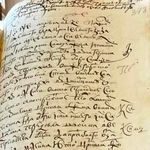 Hierarchy and Governance Institutions of the Russian Orthodox Church
Hierarchy and Governance Institutions of the Russian Orthodox Church
N.V. Sokolova
Description of the Patriarch House Possessions at the Beginning of the Early 18th Century as a Source on the History of the Russian Orthodox Church
The article introduces into scientific circulation the original descriptive books of the patriarchal patrimony of 1701–1703, the most important source on the history of the Russian Orthodox Church of the beginning of the 18th century. Its significance for the study of the land ownership of the Patriarchal House, the system of management of patrimonial estates, the organization of the patriarchal and peasant economy is stated. The necessity of revising, taking into account this set of documents, some key provisions concerning the history of the initial stage of the church reform of Peter the Great is shown.
Publishing: 28/04/2022
How to cite: Sokolova N.V. Description of the Patriarch House Possessions at the Beginning of the Early 18th Century as a Source on the History of the Russian Orthodox Church // Historical Courier, 2022, No. 2 (22), pp. 127–140. [Available online: http://istkurier.ru/data/2022/ISTKURIER-2022-2-08.pdf]
 Hierarchy and Governance Institutions of the Russian Orthodox Church
Hierarchy and Governance Institutions of the Russian Orthodox Church
I.A. Shipilov
The Orthodox Population of Siberia in the 18th Century in the Works of Academic and Government Expeditions’ Participants
The article from the standpoint of the “imperial paradigm”, “anthropological” and “pragmatic” methodological turns carries out a complex analysis of scientific works and materials of participants of academic and government expeditions of the 18th century dealing with to the Orthodox population of Siberia. It was revealed that the Christianization and Enlightenment of the indigenous peoples of Siberia were a component of the cultural policy of the Russian Empire. It was established that the travelers, representing various directions of Christianity, demonstrated exemplary religious tolerance in spreading Orthodoxy and Enlightenment among the local population of Siberia. It was concluded that the expeditions contributed to the geographical dynamics of Orthodox Christianity in the region and the formation of the multi-ethnic composition of its flock.
Publishing: 28/04/2022
How to cite: Shipilov I.A. The Orthodox Population of Siberia in the 18th Century in the Works of Academic and Government Expeditions’ Participants // Historical Courier, 2022, No. 2 (22), pp. 141–157. [Available online: http://istkurier.ru/data/2022/ISTKURIER-2022-2-09.pdf]
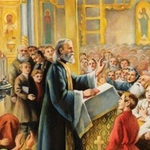 Hierarchy and Governance Institutions of the Russian Orthodox Church
Hierarchy and Governance Institutions of the Russian Orthodox Church
N. Kizenko
Russian Bishops’ Sermons on Penance from the 18th and 19th Centuries in Their Social and Political Context
Russian Orthodox bishops’ sermons on confession in the 18th and 19th centuries reflect the intersection and balancing of different simultaneous goals: teaching eternal verities, engaging the contemporary flock’s actual moral state, and incorporating the aims of Russian rulers, such as those expressed in the Spiritual Regulation of Peter I. The homilies of Metropolitan Dimitriy (Tuptalo) of Rostov linked the sacrament of penance to liturgy; Platon (Levshin) and Tikhon of Zadonsk emphasized repentance as a life-long activity rather than an annual rite.
Publishing: 28/04/2022
How to cite: Kizenko N. Russian Bishops’ Sermons on Penance from the 18th and 19th Centuries in Their Social and Political Context // Historical Courier, 2022, No. 2 (22), pp. 158–176. [Available online: http://istkurier.ru/data/2022/ISTKURIER-2022-2-10.pdf]
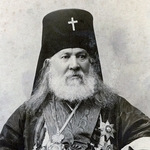 Hierarchy and Governance Institutions of the Russian Orthodox Church
Hierarchy and Governance Institutions of the Russian Orthodox Church
M.V. Pulkin
Diocesan Bishop in the Middle of the 18th – Beginning of the 20th Century: A Circle of Concerns and the Boundaries of Competence (Based on the Materials of the Olonets Diocese)
The article examines the main patterns of activities of diocesan bishop. The main tasks of bishop throughout the entire period under for study remained the solution of financial and personnel issues related to the daily life of the Russian Orthodox Church. The problems of missionary activity and organization of the stable work of the system of church education became no less significant areas of the bishop’s activity. The importance of analytical work related to the compilation of reports on the life of the diocese gradually increased.
The financial support of the research was carried out from the federal budget to fulfill the state task of the KarSC RAS on the topic: “Karelia in the Conditions of Social Transformations of the 17th–21st Centuries: new Approaches and Interpretations” (state registration number 121070700117-1).
Publishing: 28/04/2022
How to cite: Pulkin M.V. Diocesan Bishop in the Middle of the 18th – Beginning of the 20th Century: A Circle of Concerns and the Boundaries of Competence (Based on the Materials of the Olonets Diocese) // Historical Courier, 2022, No. 2 (22), pp. 177–187. [Available online: http://istkurier.ru/data/2022/ISTKURIER-2022-2-11.pdf]
 Hierarchy and Governance Institutions of the Russian Orthodox Church
Hierarchy and Governance Institutions of the Russian Orthodox Church
A.I. Savin
Religious Organizations in the USSR as Viewed by the 5th Department of the KGB (1971)
This article introduces the analytical “Note” of the 5th Department of the KGB (January 1971) on the Russian Orthodox Church and the so-called Christian sects. The “Note” is of particular interest because it introduces the reader to a specific context of the policy of the higher party and state leadership of the USSR toward religious organizations during the Brezhnev era. The main specificity of this policy was its duality: the ratio between the liberal and repressive components depended directly on the loyalty of any denomination and the degree of conformity of its leadership.
Publishing: 28/04/2022
How to cite: Savin A.I. Religious Organizations in the USSR as Viewed by the 5th Department of the KGB (1971) // Historical Courier, 2022, No. 2 (22), pp. 188–205. [Available online: http://istkurier.ru/data/2022/ISTKURIER-2022-2-12.pdf]
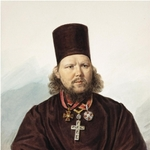 History of Orthodox Pedagogy and Education
History of Orthodox Pedagogy and Education
D.V. Dolgushin
“Maybe This is the Last Time I Talk to You…”: Sermons and Letters from Archpriest Gerasim Pavsky to Grand Duke Alexander Nikolaevich
The article introduces previously unpublished texts by Archpriest Gerasim Pavsky, namely three sermons (1827–1828) and two letters addressed to his student – the heir to the throne, Grand Duke Alexander Nikolayevich. They are important both for the biographies of G.P. Pavsky and Alexander II, and for the history of theological education and court pedagogy in Russia. The texts are accompanied by a detailed scientific commentary.
Publishing: 28/04/2022
How to cite: Dolgushin D.V. “Maybe This is the Last Time I Talk to You…”: Sermons and Letters from Archpriest Gerasim Pavsky to Grand Duke Alexander Nikolaevich // Historical Courier, 2022, No. 2 (22), pp. 206–225. [Available online: http://istkurier.ru/data/2022/ISTKURIER-2022-2-13.pdf]
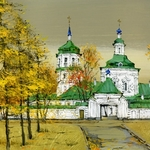 History of Orthodox Pedagogy and Education
History of Orthodox Pedagogy and Education
N.K. Chernyshova
Mikhail Vasilyevich Odintsov – Irkutsk Spiritual Writer of the Silver Age: the Fate and Problems of Studying the Creative Heritage
The article is devoted to the study of the biography and creative heritage of a man of complex destiny, whose life was torn in two by the events of the revolution and the Civil War – Irkutsk Orthodox writer, theologian and philosopher, teacher and public figure Mikhail Vasilyevich Odintsov, whose personality, creativity and activities are just beginning to attract the attention of historians and other specialists in the humanities. On the basis of the revealed sources, the biography of the writer was reconstructed, published works were revealed, the history of a dissertation he wrote on the Danish philosopher and theologian of the mid-19th century was reconstructed.
Publishing: 28/04/2022
How to cite: Chernyshova N.K. Mikhail Vasilyevich Odintsov – Irkutsk Spiritual Writer of the Silver Age: the Fate and Problems of Studying the Creative Heritage // Historical Courier, 2022, No. 2 (22), pp. 226–237. [Available online: http://istkurier.ru/data/2022/ISTKURIER-2022-2-14.pdf]
 Book Culture and the History of the Old Believers
Book Culture and the History of the Old Believers
N.A. Gurianova
Historical Studies of the Opponents of Church Reform in the Second Half of the 17th Century
The article examines the specific features of perception of the past events by the opponents of the church reform. The appeal to the analysis of the monuments of writing of two Solovetsky monks provided an opportunity to show the initial stage of the process of formation among the Old Believers of the prophetic-eschatological type of connection of Russian history with the world. This is important for deepening our understanding of the broad religious and social movement that has existed for several centuries, the development of which was based on national traditions.
Publishing: 28/04/2022
How to cite: Gurianova N.S. Historical Studies of the Opponents of Church Reform in the Second Half of the 17th Century // Historical Courier, 2022, No. 2 (22), pp. 238–250. [Available online: http://istkurier.ru/data/2022/ISTKURIER-2022-2-15.pdf]
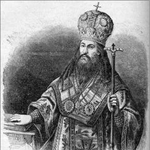 Book Culture and the History of the Old Believers
Book Culture and the History of the Old Believers
L.V. Titova
Opponents of the Church Reform on the Antichrist Essence of Patriarch Nikon
Based on the study and analysis of the Old Believer essay on the Antichrist, it seemed possible for us to conclude that the idea of the antichrist essence of Patriarch Nikon was formed among the first generation of opponents of church reform. The negative attitude towards the patriarch was expressed by the Old Believer writers in different ways, endowing him with individual features of the Antichrist (“the horn of the Antichrists”, “Marker of God”, the forerunner of the Antichrists) and only in the Sermon on the Antichrist, created shortly after 1664, for the first time Patriarch Nikon is openly referred to as the Antichrist.
Publishing: 28/04/2022
How to cite: Titova L.V. Opponents of the Church Reform on the Antichrist Essence of Patriarch Nikon // Historical Courier, 2022, No. 2 (22), pp. 251–259. [Available online: http://istkurier.ru/data/2022/ISTKURIER-2022-2-16.pdf]
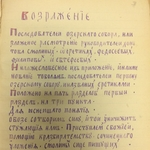 Book Culture and the History of the Old Believers
Book Culture and the History of the Old Believers
P.I. Mangilev, V.O. Olischuk
“The Objection of the Followers of the Ozersk Council” as a Source on the History of the Controversy About Marriage Among the Old Believers-Pomeranians of the Southern Trans-Urals
The article examines the composition of the Old Believers of the Pomeranian consent of the Southern Trans-Urals “Objection of the followers of the Ozersk Council” (1905), reflecting active disputes within the consent on the possibility of accepting marriages concluded without the blessing of a priest. Information is given about the manuscripts that contain the essay, about the time of writing the text. A brief overview of the essay is given.
Publishing: 28/04/2022
How to cite: Mangilev P.I., Olischuk V.O. “The Objection of the Followers of the Ozersk Council” as a Source on the History of the Controversy About Marriage Among the Old Believers-Pomeranians of the Southern Trans-Urals // Historical Courier, 2022, No. 2 (22), pp. 260–268. [Available online: http://istkurier.ru/data/2022/ISTKURIER-2022-2-17.pdf]
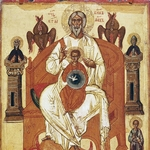 Book Culture and the History of the Old Believers
Book Culture and the History of the Old Believers
N.A. Starukhin
Pomor Polemical Writing “Confession of Faith of My Unworthiness” and Its Author
The article introduces into scientific circulation the writing “A Brief Confession of My Unworthiness”, which belongs to the Nizhny Novgorod scribe G.E. Tokarev the leader of one of the original Old Believer Agreements, who later received the name of his ideologue. The organizational design of the “Tokarevtsy” as an independent movement was preceded by an intense long-term controversy in Pomeranian societies in the second half of the 19th century on issues of marriage, re-baptism and some others. The discussions affected communities not only in the central part of the country, but also in the Urals and Siberia. Analysis of the sources that have become available to researchers in recent years showed that this controversy was based on internal contradictions, to a large extent related to the rethinking of the legacy of the early Vyg.
Publishing: 28/04/2022
How to cite: Starukhin N.A. Pomor Polemical Writing “Confession of Faith of My Unworthiness” and Its Author // Historical Courier, 2022, No. 2 (22), pp. 269–277. [Available online: http://istkurier.ru/data/2022/ISTKURIER-2022-2-18.pdf]
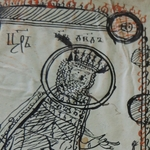 Book Culture and the History of the Old Believers
Book Culture and the History of the Old Believers
V.A. Esipova
Old Believer Libraries Kept in the Collection of the Tomsk Theological Seminary Until 1917: Intermediate Results of the Work
The article considers the Old Believers’ libraries as part of the fonds of the Tomsk Theological Seminary, now stored in the National Library of TSU. The methods of identifying Old Believers’ libraries using scribal and owner’s records along with, records made during the seizure of books are considered. The possibilities of the fonds of the State Archive of the Tomsk region to clarify questions about the owners of the seized books, their biographies and the circumstances of the seizure are shown. The consideration of these sources in the complex allows reconstructing the Old Believers’ libraries seized in the territory of Tomsk province in the second half of the 19th century.
Publishing: 28/04/2022
How to cite: Esipova V.A. Old Believer Libraries Kept in the Collection of the Tomsk Theological Seminary Until 1917: Intermediate Results of the Work // Historical Courier, 2022, No. 2 (22), pp. 278–285. [Available online: http://istkurier.ru/data/2022/ISTKURIER-2022-2-19.pdf]
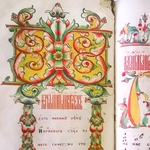 Book Culture and the History of the Old Believers
Book Culture and the History of the Old Believers
T.G. Kazantseva, E.A. Omarova
The Liturgical Singing Culture of the Old Believers of the Chasovennye Agreement of the Upper Reaches of the Small Yenisei in the 1960s–1970s (Based on Archeographic Expeditions’ Materials)
In the article, based on the field diaries of the archaeological expeditions of 1967 and 1977, the reconstruction of the picture of the existence of the liturgical singing of the Old Believers of the Chasovennye Agreement, who lived in the territory of the Kaa-Khem district of the Republic of Tyva, is carried out. The issues of the organization of divine services, the active functioning of the written tradition, the ways of transmitting singing knowledge are touched upon; the problem of local singing is discussed; information is given about the leading singers of the region, whose voices were preserved on audio recordings during field research of the same years.
Publishing: 28/04/2022
How to cite: Omarova Е.A., Kazantseva T.G. The Liturgical Singing Culture of the Old Believers of the Chasovennye Agreement of the Upper Reaches of the Small Yenisei in the 1960s–1970s (Based on Archeographic Expeditions’ Materials) // Historical Courier, 2022, No. 2 (22), pp. 286–296. [Available online: http://istkurier.ru/data/2022/ISTKURIER-2022-2-20.pdf]



